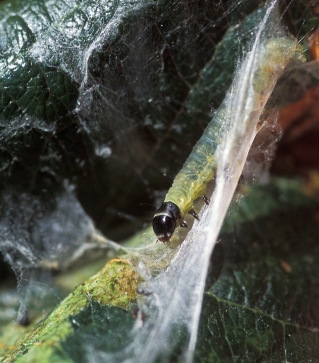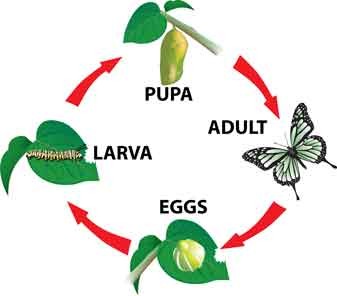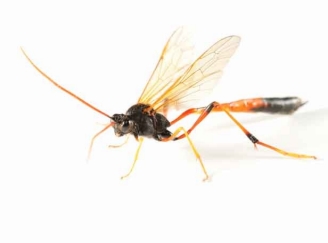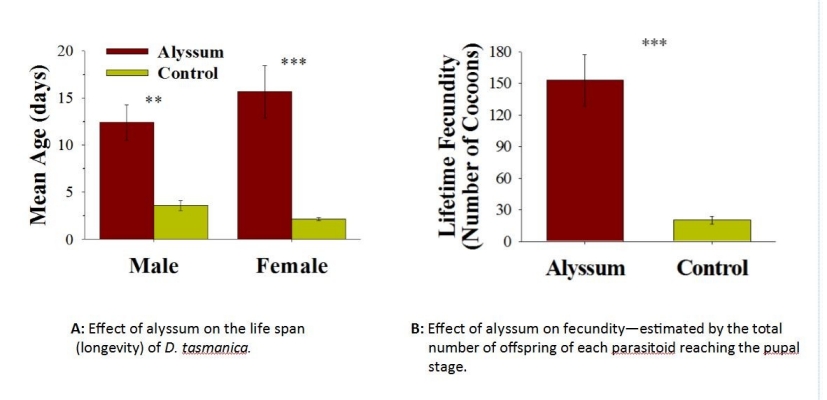Leafrollers are one of the major pests of grapevines in New Zealand and Australia. Leafroller refers to the larval or caterpillar stage of a number of moth species. The larvae feed on grapes, flowers and stalks causing a reduction in yield. More importantly the damage caused by the larvae encourages the spread of a fungal disease, Botrytis cinerea or grey mould. This reduces grape yield but also affects the flavour and ageing of the wine.
Traditional control of leafrollers is through frequent spraying of insecticides. Sprays are applied when more than 5% of the bunches of grapes have one or more caterpillars. There are three problems with this approach.
- Firstly notice how the caterpillar rolls the leaf edges together and joins them with a web. This structure makes it very difficult for pesticide sprays to come in contact with the pest.
- The second problem is that spraying results in pesticide residues in the grapes. Society is increasingly demanding fewer pesticide residues in food, which requires a different approach to controlling the caterpillars.
- Finally, the pesticide will kill natural enemies within the ecosystem.









